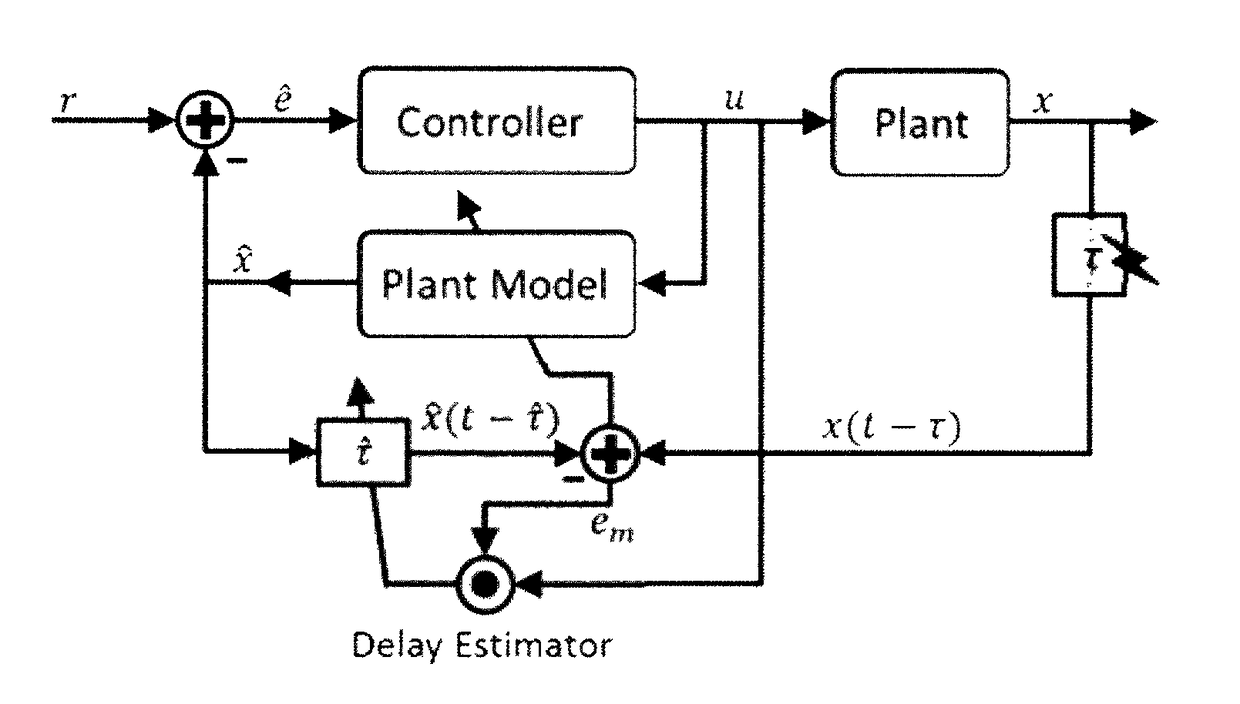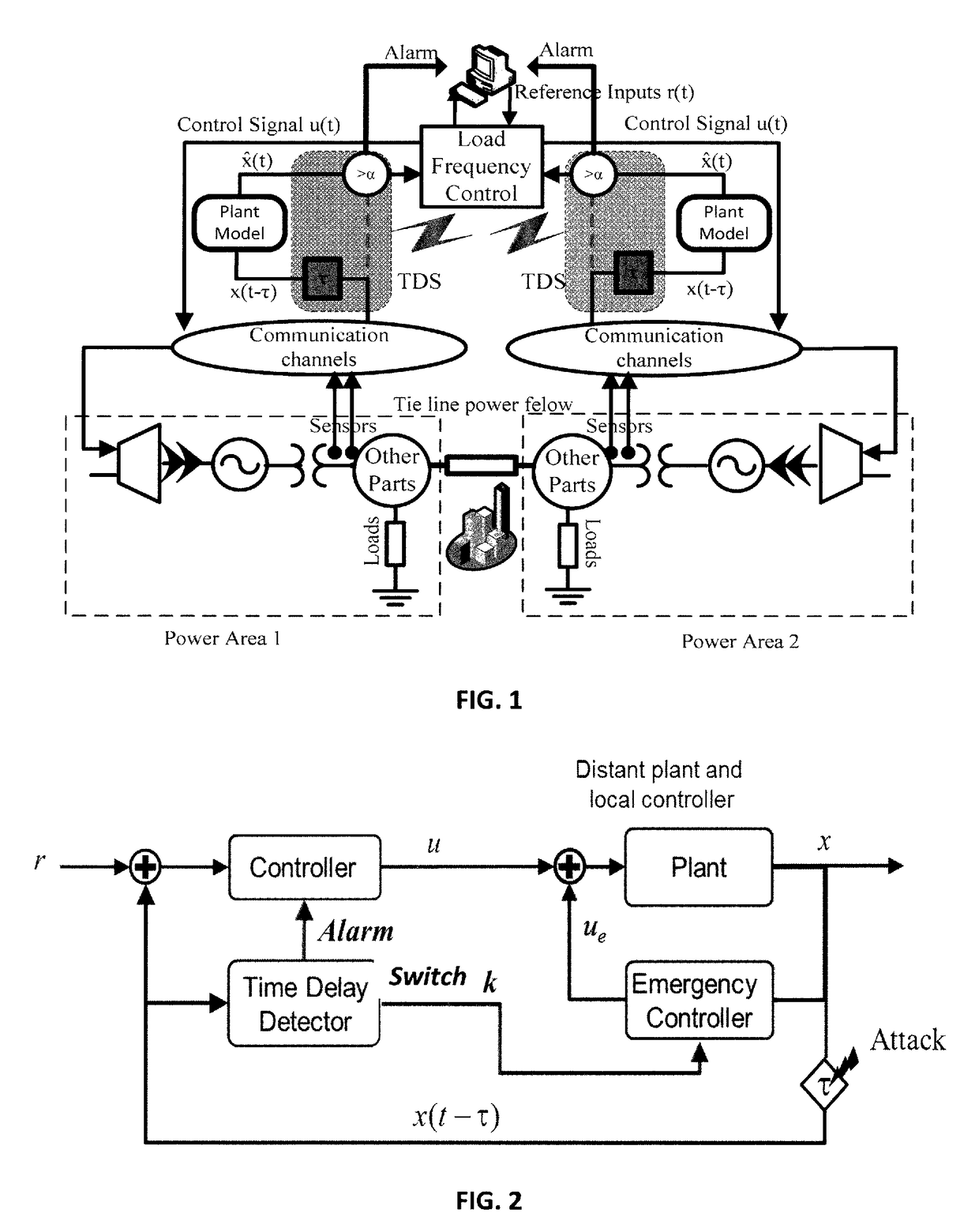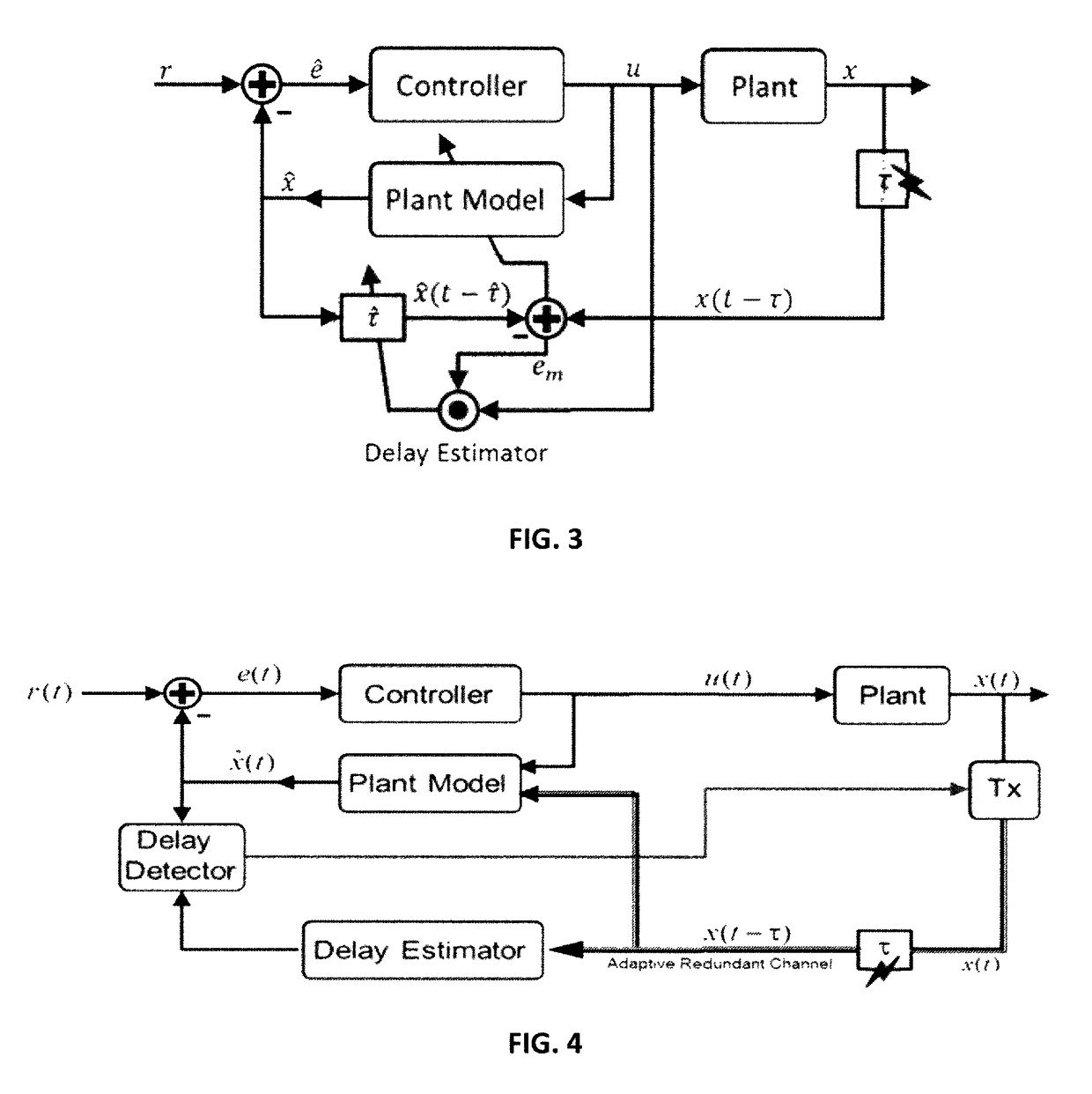Detection of and responses to time delays in networked control systems
a networked control and time delay technology, applied in adaptive control, program control, instruments, etc., can solve problems such as affecting system stability, affecting system stability, and affecting system performance, and achieve the effect of meliorating the detrimental effects of time delays
- Summary
- Abstract
- Description
- Claims
- Application Information
AI Technical Summary
Benefits of technology
Problems solved by technology
Method used
Image
Examples
example 1
[0141]In this simulation, the total simulation time is 50 seconds and the sampling time is 0.01 s. Assume that an adversary performs a TDS attack on feedback lines of both power areas. In the simulation, an attacker starts a TDS attack on the second power area (third state) at time 1 second for td3=5 s and then increases it to td3=10 s at 20 seconds. Furthermore, the adversary starts to attack the first power area (third state), at 1 second with td8=3 s and increased it to td8=4.5 s at 30 seconds. FIG. 5A shows TDS attack detection and tracking for the third state of the first power area. FIG. 5B shows TDS attack detection and tracking for the third state of the second power area.
[0142]FIGS. 5A and 5B show that the detection method could follow the time delay attack accurately. The stability value is set to τstable=0.4 s, based on stability analysis of an LFC system in Sargolzaei, Yen, and Abdelghani (“Time-Delay Switch Attack on Load Frequency Control in Smart Grid”, Publication in...
example 2
[0144]Examples 2-3 show simulations with embodiments including an adaptive controller. Example 2 uses a simple single-input, single-output system under a variable time delay attack with a variable reference signal. This test demonstrates the usability and efficiency of the techniques and systems. The simulation model is given by
[0145]x.(t)=-0.7x(t)+2u(t)r(t)={1-e-γ2tt≤Ta4e-γ1(t-Tb)(sin(2πωat)+1)otherwiseτ(t)=T1e-λ1t(sin(2πω1t)+1)+T2(1-e-λ2t)+1(54)
where the total simulation time T=500 sec., Ta=T / 2, Tb=T / 2.2, T1=T2=T / 10, λ1=0.005, λ2=0.0005, γ1=0.07, γ2=0.004, ωa=0.06, ωl=0.005 and the sampling time is 0.01 sec.
[0146]A proposed PID controller tracks the reference signal under TDS attack. FIG. 6A shows the tracking performance of a single-input, single-output system under TDS attack. FIG. 6A indicates the state of the plant given in the Equation (54) and tracking the desired trajectory r(t). The tracking is almost perfect, even though the time delay i...
example 3
[0148]Having shown that the simple, modified model-based control and time-delay estimation techniques and systems work for simple single-input, single-output systems under variable time delay attack, distributed power control systems where time delay mitigation strategies are paramount are now considered.
[0149]In an LFC system where the controller's job is to regulate the states of a network of power plants, analysis begins with the design of an optimal controller for the LFC in normal operation (e.g., with no attack). Consider a two state power plant model with the performance index described by
[0150]J=12∫0tf{XT(t)QX(t)+UT(t)RU(t)}dt(55)
where matrix QϵRn×n is positive semi-definite and RϵRm×m is positive definite. The optimal control problem is to obtain optimal control U*(t) that minimizes the performance index in Equation (55), subject to the dynamic of the system with no time-delay in its states.
[0151]Simulation studies have been conducted to evaluate the effects of ...
PUM
 Login to View More
Login to View More Abstract
Description
Claims
Application Information
 Login to View More
Login to View More - R&D
- Intellectual Property
- Life Sciences
- Materials
- Tech Scout
- Unparalleled Data Quality
- Higher Quality Content
- 60% Fewer Hallucinations
Browse by: Latest US Patents, China's latest patents, Technical Efficacy Thesaurus, Application Domain, Technology Topic, Popular Technical Reports.
© 2025 PatSnap. All rights reserved.Legal|Privacy policy|Modern Slavery Act Transparency Statement|Sitemap|About US| Contact US: help@patsnap.com



